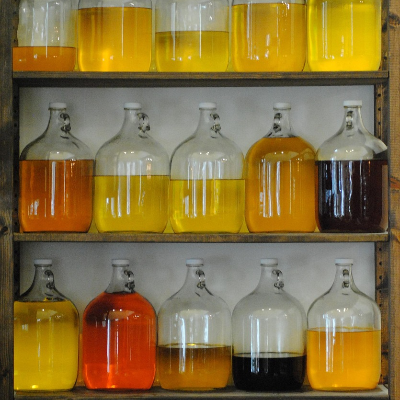Menu
-
-
F.A.Q
- How to identify genuine agarwood chip, natural or cultivated
- How to identify oil injection / absorption fake agarwood beads
- How to know if there are more than one oil in your oil
- How to make your wood bracelet or mala darker
- How to tell if an Agarwood bead sinks WITHOUT sinking it under water?
- How does back flow incense work and how do you burn it?
- Where to start if you don't know what agarwood is ?
- Why are you losing money if you buy seeds and plants?
- Which agarwood incense should I choose?
- Frequently Asked Questions
- Agarwood Related Articles
- Shipping
-
SHOP - Agarwood
-
SHOP - Other Fragrant Wood
-
SHOP - Incense Holder and Burner
-
- FREE Oud Oil guide
- Testimonials
- "Why did you buy this?"
- Contact us
- About Us
- +61430284329
- Login
-
English


New To Agarwood? I have some tips for you
July 23, 2025 5 min read
Haven't tried Agarwood before? Here Is What Every Beginner Needs to Know Before Buying
For many people who have never experienced Agarwood before, it can feel overwhelming. The "jargon", the variety of grades, the origins, the form for example, wood chips, oils, beads, which are a lot to take in. Add to that the "sinking wood" or "wild" , "cultivated," and it is easy to feel unsure about where to begin.
In this blog, I will keep things as clear and straightforward as possible. My goal is to help you understand the essentials without confusion, so you can make informed decisions and appreciate the beauty and value of Agarwood for what it truly is.
1. Understanding that “Sinking” is Not Everything
For some reason, many people from China, Malaysia, Singapore, and even Vietnam keep asking about “Sinking Agarwood.” You have probably heard the term as well, as it is commonly believed to represent the highest quality.
When I asked why, most replied with statements like, “Someone told me,” or “I read it on various websites.” What they are actually referring to is resin-rich Agarwood. The more resin it contains, the heavier it becomes, to the point that it sinks in water. That is why the word "sinking" has become associated with top quality.
And yes, a higher resin content does indicate better quality Agarwood. Sinking is simply the result of the wood being packed with resin.
Sure it is ! But ...
While it is true that sinking Agarwood is rare, and high in value, it does not mean that floating Agarwood is low quality. It also does not mean sinking Agarwood is better in aroma and quality.
Some unscrupulous sellers know this, they know people who are chasing sinking Agarwood blindly, so they will inflate the price. It is important to ask yourself, " what do I want?" I think there are 3 things you need to look for
1) The aroma: with Agarwood chips, it is very easy, you can burn a tiny sample and within five seconds, you will know if you love this Agarwood or not
2) Is it cultivated or wild Agarwood? Wild Agarwood are expensive compared to cultivated ones. Most of the time, the wild Agarwood, when burned, will smell better, more complex. But with current technology, the cultivated Agarwood ones are not bad at all. We are getting quite close to the wild ones. And the good news, the price is usually half compared to the wild ones.
3) The appearance of the Agarwood: how do the resin veins look? How is it colour, too black, too yellow, too pale?

A floating piece of agarwood offers a gentle, elegant scent that is of great value, especially for personal appreciation is good enough. I have seen many sinking pieces that do not smell as good as floating ones.


2. The complexity of the agarwood chip
Take your time, get some genuine Agarwood first (through some reputable vendors). Use the Kodutu burner to experience. This burner is intermittent, on for 3 minutes and off, and you turn it on again until you are happy with your try.
Anyway, you will feel different aroma layers over time
- Initial sweetness or freshness
- Mid-notes of woodiness, herbaceous, spicy, floral tones (sometimes)
- Balsamic, earthy, woody, resinous, sweet vanillic
Each region (countries, provinces) produces agarwood with distinct characteristics, and each person's olfactory experience is unique. What one person finds pleasant, another may not. Therefore, beginners should focus on training their own sense of smell, not just following what others say.
Use slow, deep inhalation. Try heating a small chip gently and closing your eyes while experiencing the aroma. With time, you will begin to recognise region, resin type, and even formation method
3. I want darker Agarwood. Do you have any more darker than dark Agarwood?
Do Not Over-emphasise Age or Darkness
You probably heard it too
"darker is better"
"darker means older"
"darker wood means higher quality"
And so on....
If you are a seller, and you are reading this, I am sure you can relate.
There is a saying in the agarwood world:
“Dark is not always old, and old is not always good.”
Many people believe that the darker the wood, the older and better it must be. While resin does deepen over time, dark colour could also result from chemical soaking, artificial dyes, or other treatments. For example, "roasting" the wood with higher heat will also turn it dark.
On the other hand, aged agarwood that has been poorly stored may have lost its fragrance. Appearance alone is not a reliable indicator of quality.
It needs to be stored in a zip jar, a closed container, or a tightly sealed environment with minimal air exposure.

I think the below is important
-
Whether the colour is natural or "darkened" by "trick".
-
How the agarwood piece smells when warmed
-
How does the resin look in the wood? The resin veins follow a natural grain with an irregular pattern? Or is it too perfect (as the maker could "paint" the patterns). You can touch and feel it

4. Understanding Shape and Texture
Agarwood comes in various forms, including blocks, flakes, shavings, carvings, and powder. For burning, chips and flakes are most commonly used. For collecting, many prefer raw chunks with dense resin lines.
If you are new to Agarwood, you should familiarise yourself with:
-
Resin patterns – visible black or golden veins show natural accumulation
-
Weight and density – heavier pieces generally contain more resin
-
Surface texture – high-quality agarwood may feel slightly waxy or oil

Beware of too-smooth or glossy surfaces, which can indicate polishing or artificial coating. This is usually applied to beads.
5. Avoiding Common Traps
Some common pitfalls beginners fall into:
-
Chasing names or brands without understanding the material
-
Being misled by sellers using exaggerated marketing language
-
Buying heavily fragranced “agarwood” that is actually chemically infused
If you have not tried Agarwood before, you should build experience slowly:
-
Start with small quantities of different types.
-
Buy from trusted sources.
-
Compare heated aroma vs unheated aroma.
-
Keep notes of what you smell and how it changes.
Just like learning wine or tea appreciation, understanding agarwood takes time and direct experience.
Heating chip with Kodutu unit is a good way to appreciate the Agarwood fragrance

6. Cultivating a Calm and Patient Mindset
True enjoyment of agarwood is not about collecting expensive pieces or impressing others. It is about cultivating inner stillness and appreciating the subtle beauty of nature's gift.
Whether one is burning a chip in meditation or examining the grain of a resin line, what matters is being present in the experience.
As one ancient fragrance poem says:
“Burn not for show, but for the soul.”
Leave a comment
Comments will be approved before showing up.
Also in News

What is Tasbih? The Deep Meaning of Subhan Allah and the Role of Prayer Beads
November 09, 2025 4 min read


